The book ‘Understanding Nepal in Contemporary Times’ is an edited volume by Pramod Jaiswal which is published in 2016 by Synergy Books India, New Delhi.
The 464-paged book covers different aspects of Nepal such as government and politics, issues related to economy, society, culture, literature, environment, ecology and disaster, education and science and technology.
Jaiswal is a Senior Fellow at the Institute of Peace and Conflict Studies, New Delhi whose research focus is on insurgencies, border management, terrorism, illegal migration, radicalism, and ethnic conflicts. He specializes in South Asia with a focus on Nepal and China’s role in the region.
As the title itself mentions, the book covers the contemporary issues of Nepal. The five sections of the book have 21 well-researched papers of young and dynamic researchers from Nepal, India, USA, Nigeria, Austria, UAE and Australia.
There are chapters on history, local governance, issues of human rights, gender violence, ethnicity, issues related to constitution-making, the impact of migration and remittances on Nepalese Economy, socio-cultural issues such as issues of religious conversion, women empowerment, Nepal’s art and architecture, Nepal’s education policy, medical policy, cyber policy, issues related to environment, ecology and disaster management.
The first chapter is on “Political Parties of Nepal: Role and Significance in the Nepali Polity” by Palu Joshi where she highlights the importance of the political parties in a system like Nepal which had essentially been under the influence of a King and how they emerged as a game-changer at every crucial point of time in the political history of Nepal. Her paper explains how political parties have evolved in Nepal since 1950.
The writer aimed to make his readers understand why the state needs to get involved in the social relations, affairs and structures of its subjects.
The second chapter is on “The Gorkha State and 19th Century Nepali Society: Assimilation and Contestation” by Binayak Sundas.
This is the largest chapter which mainly focuses on focused primarily on the manner and the reasons for the expansion of the Gorkha state.
The writer aims to make his readers understand why the state needs to get involved in the social relations, affairs and structures of its subjects.
The third chapter is on “Voices to Bridge the Gap between the Citizens and the Local Government” by duo writers Rajib Timalsina and Puspa Paudel.
Both the writers unpack the realities of the All-Party Mechanism (APM) and Ward Citizen Forum (WCF) and Integrated Planning & Formulation Committees (IPFC) – stop-gap systems of local governance that have been in place since 2008 when the elections to the Constituent Assembly took place.
The fourth chapter is on “Madhesh and the Inclusion Issue in Nepal” by Mukesh Jha and Khushbu Mishra. Both the writers discuss various aspects of Madheshis, the indigenous people of southern plains of Nepal, and focuses on their inclusion in the Nepali society, economics and politics.
The writer has tried to explain how sexual and gender-based violence were used as tactics to terrorize women, as women were brutally raped and subjected to the horrific violence of unimaginable kinds.
The fifth chapter is on “Human Rights Violations in Nepal: Patterns and Evolution” by James Okolie-Osemene. The writers address some of the issues that have shaped the perpetration and abatement of human rights abuses in the country.
The sixth chapter is on “Human Rights Violations in Nepal: Patterns and Evolution” by James Okolie-Osemene. With an emphasis on the internal and external stakeholders, this article addresses some of the issues that have shaped the perpetration and abatement of human rights abuses in the country.
The seventh chapter is on “Invisibility of Gender Violence in International Criminal Law: Addressing Sexual Violence in Nepal’s Conflict” by Kirthi Jayakumar.
The chapter contains how Nepali women were victims of torture, abuse and sexual violence during Nepal’s armed conflict that lasted from 1096-2006.
The writer has tried to explain how sexual and gender-based violence were used as tactics to terrorize women, as women were brutally raped and subjected to the horrific violence of unimaginable kinds.
The eighth chapter is on “Women and Migration in Nepal: A Juncture of Change” by Amrita Limbu. She explores various issues surrounding women’s migration from Nepal to major destination countries.
Compared to male migrant workers, women face greater risk at every stage of migration.
Chapter nine is on “Migration from Nepal: A Reality of Livelihood” by Ram Pravesh Sah. In this chapter, the writer looks at the process of migration from Nepal and tries to find out why migration has been taken place.
Chapter ten is on “Labor Migration, Remittance and its Impact on the Economy of Nepal” by Labh Kumar Yadav and Seema Kumari Shah.
The writers look at migration and remittances in Nepal during the civil war and the global economic crisis and investigate the impact of migration and remittance on the developmental process of Nepal by examining the post-2006 remittance inflows in Nepal and its contribution in boosting up Nepalese economy, which is struggling to graduate from least developed countries to developing countries by 2022.
Chapter eleven is on “Christian Conversion Narratives in Nepal” by Marija Grujovska. The writer answers how Nepalese Christians construct their conversion narratives in modern-day Kathmandu.
Chapter twelve is on “A Comparative Study on Women Empowerment in Nepal: Ethnic Perspective” by Bhuvan Chaudhary.
The writer does a comparative study on women empowerment in Nepal through ethnic perspective. He concludes that Women’s empowerment by ecological belt and development region needs further study to observe the regional variation.
Chapter thirteen is on “Social Work(ers) in Nation Building” by Raj K. Yadav. The writer discusses how a modern era profession ‘social work’ might fit in addressing national chaos and lead the country towards better social, cultural, political, and economic transformation.
Chapter fourteen is on “Art and Architecture of Nepal: Its Esthetic Sense and Awareness” by V. Ramabrahmam. The writer talked about the art and architecture of Nepal and its esthetic sense in detail and links them in contemporary ongoing multidisciplinary academic study and debate on collective identity and indigenous territory mainly delinked by sociopolitical, linguistic, cultural and historical dominations in several phases of recent-contemporary and the past Nepalese history.
Nepal saw an engaged response from both the formal and informal sectors, mostly active in relief distribution after the first major quake struck and great energy was shared by Nepalese youth.
Chapter fifteen is on “Re/linking the Kiranti People of Nepal through Linguistic- Paleontological Evidence” by Lal Rapacha. This chapter investigates pertinent linguistic-paleontological evidence.
Chapter sixteen is on “Macro Study on Structure and Issues of Education System in Nepal” by Sree Krishna Bharadwaj. The writer has tried to bring out the current structure of the education system as well as the issues in Nepal.
He opines that the right to education guaranteed through various international instruments and also the anomalies are analyzed which highlights the deviations in obligations to be performed by a country.
Chapter seventeen is on “Medical Pluralism: Policies and Practices in Nepal” by Bamdev Subedi.
The writer takes Nepal as an example of pluralistic health care practices of a rural community, shares some issues and concerns and questions the situation of inclusiveness of the coexisting systems of medicines in the national health care system.
Chapter eighteen is on “E-Governance in Nepal: Progress and Challenges” by Anjee Gorkhali. This chapter aims to provide a framework to analyze and identify the challenges faced by e-governance structure in the context of Nepal as well as navigate the probable path to achieve an efficient e-governance structure.
Chapter nineteen is on “Managing Earthquakes in Nepal through National and Regional Efforts” by Dhanasree Jayaram and Ramu C. M.
The writers provide a geological-cum-policy analysis of the 2015 earthquake – its causes, consequences – delving into policy gaps and proposing recommendations.
They argue that in order to implement such policies in Nepal, it needs to overcome its political, infrastructural and socio-economic crises.
Chapter twenty is on “Nepal Earthquake 2015: Vantage Point for Nation Building” by Sanjeev Dahal. The writer explains the responses of different sectors during the earthquake of Nepal.
He opines that Nepal saw an engaged response from both the formal and informal sectors, mostly active in relief distribution after the first major quake struck and great energy was shared by Nepalese youth.
Chapter twenty one is on “Disaster Management of Heritage Monuments” by Sivakumar Challa. The writer explains how heritage monuments can be preserved from the disaster. He argues that disaster recovery management can prevent or reduce the negative impacts of disaster on world heritage properties.
Chapter twenty-two is on “Understanding the Causes and Consequences of Deforestation in Nepal (1990-2013)” by Sutandra Singha.
The book does not touch the foreign policy of Nepal and its relations with neighbors. Looking at the profile of the editor, one gets the feeling that the book might have chapters on foreign relations of Nepal but it is lacking there. Too many chapters make it more like a coursebook.
The writer gives a detailed view of the issue of deforestation from 1990 to 2013 and, the combat strategy undertaken by the Government.
She also offers some recommendations which can be adopted to integrate the conservation and sustainable management of forests.
The book is very helpful to have an overall understanding about Nepal as it covers almost all aspects of the country.
This book is not only useful for research students but also for those who want to understand different issues and challenges that Nepal faces in recent times.
The book is in simple English which makes it easy to comprehend. What is highly appreciating is that it has provided space to some of the young Nepalese scholars. It can be very useful for researchers and university students who want to specialize on Nepal.
The book does not touch the foreign policy of Nepal and its relations with neighbors. Looking at the profile of the editor, one gets the feeling that the book might have chapters on foreign relations of Nepal but it is lacking there. Too many chapters make it more like a coursebook.
It can be boring for casual readers; it is informative rather than entertainment.
(Sumitra Karki is a Program Coordinator and Research Associate at NIICE)
Nepal Institute for International Cooperation and Engagement (NIICE), Nepal’s independent think tank, and Khabarhub — Nepal’s popular news portal — have joined hands to disseminate NIICE research articles from Nepal.


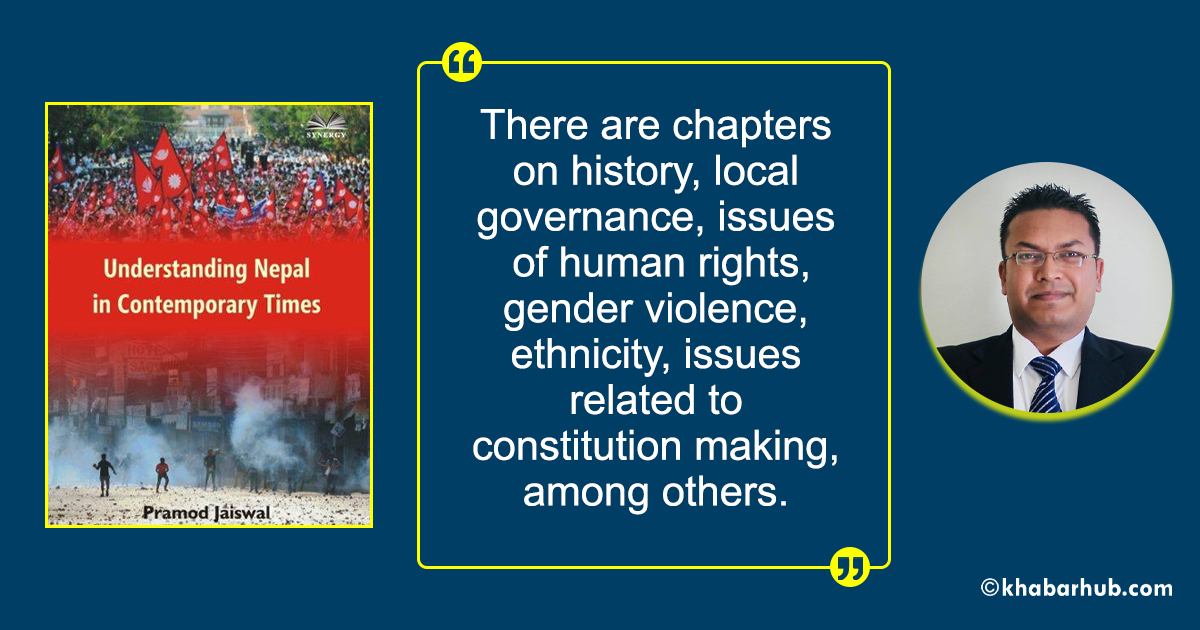
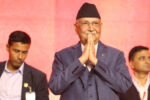
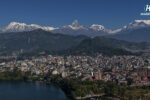
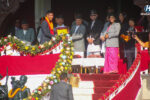
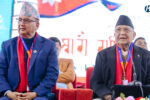
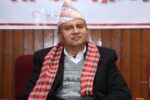

Comment